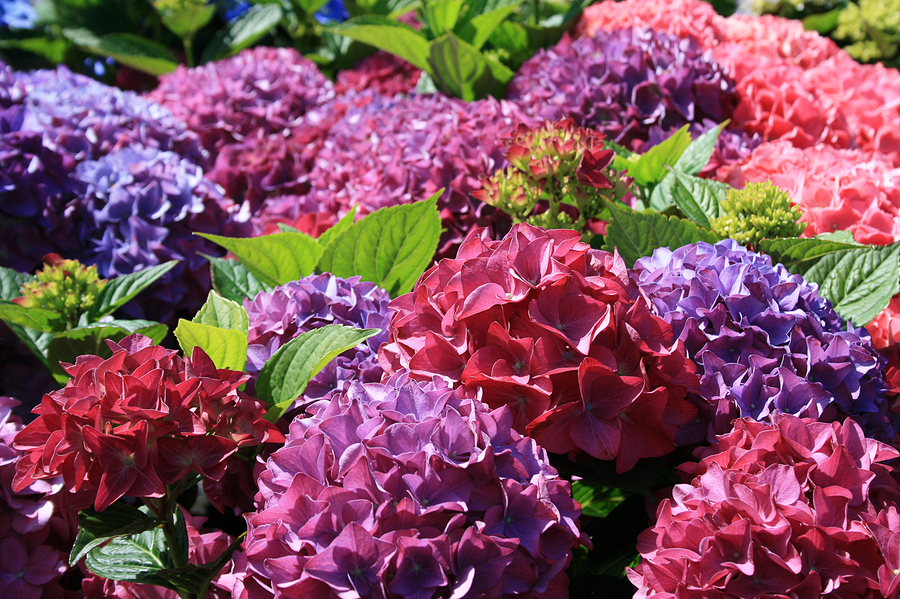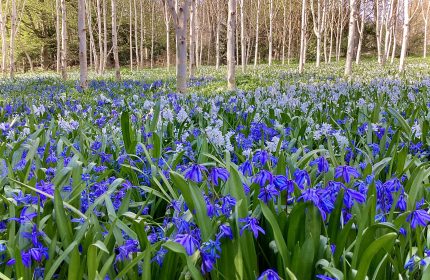Peter’s Gardening tips for August
After some record-breaking temperatures, summer is in full bloom, although many gardens have suffered from a lack of rain.
August is usually one of the hottest months of the year – making watering essential. Try to use grey water wherever possible, especially as water butts may be running low. Top up ponds and bird baths regularly. August is traditionally holiday-time, so you might need to enlist the help of friends and family to look after the garden while you are away.
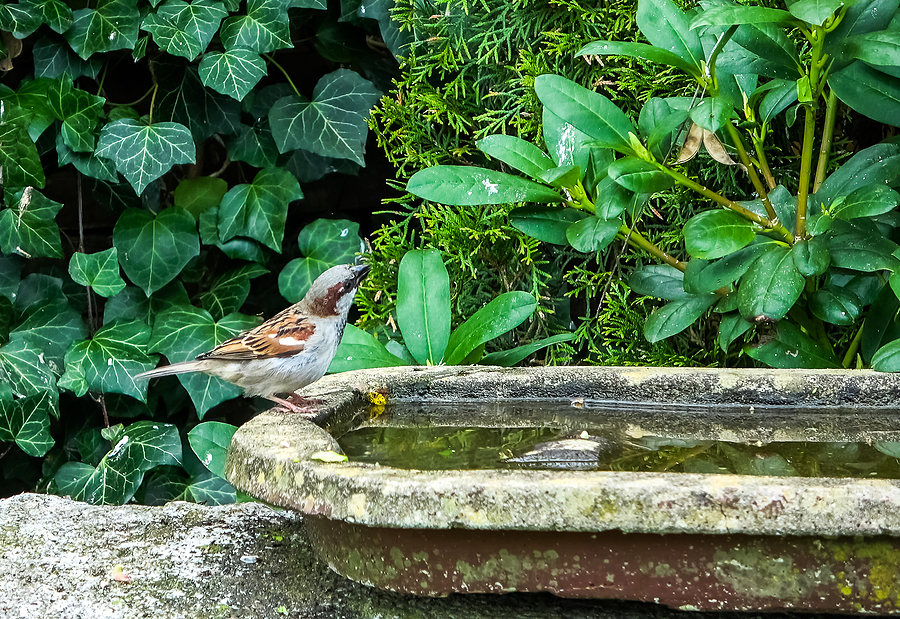
There is always plenty to do this time of year, to keep everything in tip-top condition whilst planning ahead for the autumn!
Jobs to do
Pre-order Spring bulbs
Autumn is the best time for planting spring bulbs giving them the winter months to put out roots in readiness for a spectacular display next spring, so now is the time to order them.
Think of a sunny area where you can allow the grass to grow long and plant with spring bulbs and wildflowers for this autumn. Long grass looks fabulous, and is amazing for encouraging wildlife, butterflies and moths – many breed in long grass. Frogs, toads, newts love it especially the young ones they can hide and feed on creepy crawlies. Voles in the long grass are food for kestrels and owls. In essence long grass, wildflowers, Spring and Summer flowering bulbs and annuals will give you immense pleasure to encourage wildlife, biodiversity, helping restore one of the most important ecosystems declining in Britain.
Vegetables
Onions, shallots and garlic can be harvested if the foliage falls over and start to die off. Lift to dry off somewhere warm and sunny – greenhouse floor on tarmac or gravel but don’t allow to get wet. Dry off thoroughly until foliage is crispy dry them hang up in bunches in the shed or garage, cool and dry to store.
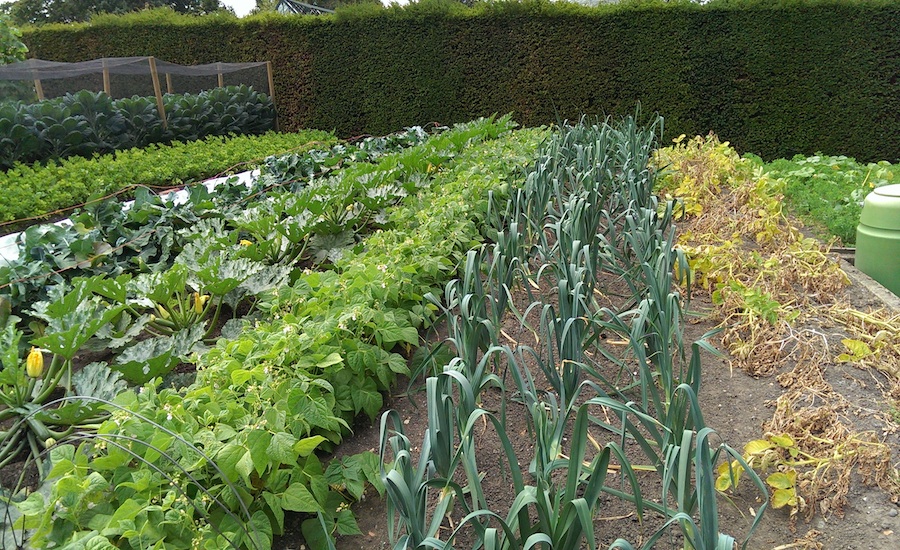
Vegetables at Wisley, Courgette, French beans, Leeks and Potatoes ready for digging up.
Potatoes
Lift when you have flowers or they have flowered. Any signs of dieback from disease must be removed, cutting the foliage (Haulms) to the ground. The potatoes can stay in the ground until required or dug up, dried and bagged in paper sacks. Discard any green potatoes. As with all storing of fruit and veg only store perfect specimens – damaged, split or diseased will cross infect healthy ones. Try to check your stores regularly.
Salad crops
Continue to sow lettuce, parsley, spinach, dill, coriander, basil, mustards, chicory and mizuma. Some of these can be brought in on a bright windowsill, greenhouse or conservatory for supplies during the autumn/winter.
Courgettes, keep cutting and feeding any of the squashes. Raise larger fruit off the ground like pumpkins and squashes to stop rotting – a tile works well placed underneath the fruit.
Cut back strawberries if they have finished fruiting, if you don’t want the runners, remove straw and weeds.
Raspberries – summer fruiting cut down fruited canes, mulch and feed.
Wisteria
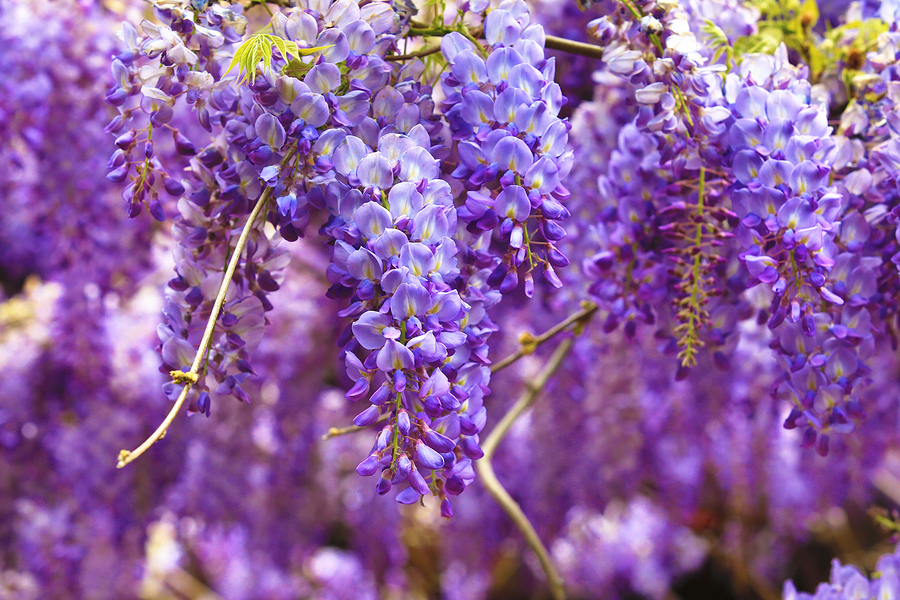
Purple wisteria flowers
Pruning – time to attack the wisteria. Cut back long tendrils to 3-4 leaves, resulting in short spurs. These will turn into flower buds for next year!
Prune Pyracantha to expose the berries – leave a bit of this year’s growth for flower next Spring. (Others shrubs include any Summer flowering ones- Philadelphus, Deutzia)….
Roses
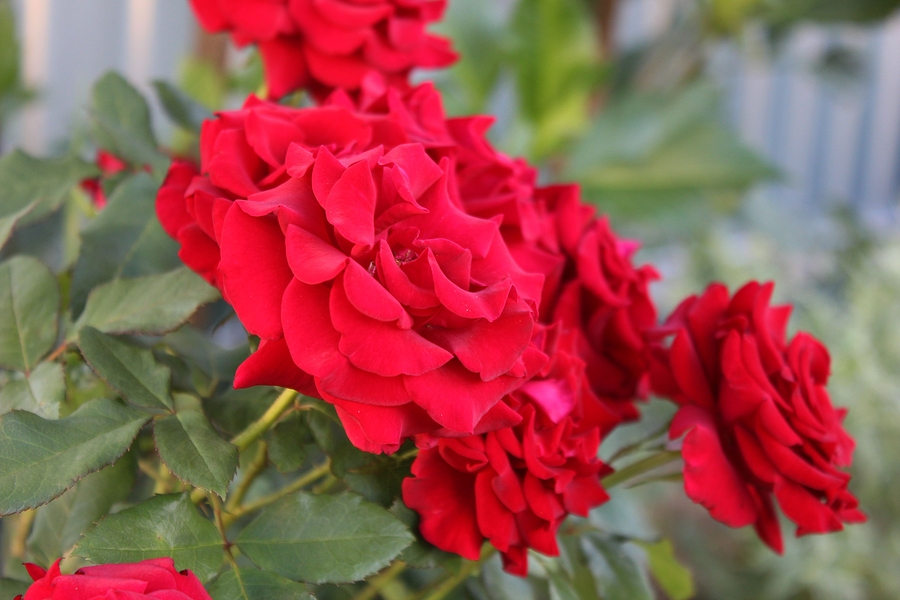
Climbing Roses and ramblers. Cut back old flowered stems – even really old long ones. Keep all the new stems especially the ones coming from near ground level. Tie these into the support. These are next years flowering stems! Bush roses continue to deadhead unless you want the rose hips. Feed and mulch for flowers this autumn.
Cuttings
The perfect month for taking Lavender and Rosemary cuttings. Snip off non-flowering shoots 10-15cms long. Strip off lower leaves and cut with a sharp knife just below a leaf joint. Fill a pot with gritty compost. Dip the cuttings into Hormone Rooting powder and push the cuttings in around the edge of the pot. Water and place in a shaded area. You will be able to pot them on this autumn and plant out next spring. Other plants for the same treatment are Geraniums (Pelargoniums), Fuchsias, Salvias and many more.
A bit of time spent dead-heading every day or so keeps the garden smart, encourages more flowers. Picking Sweet peas, climbing or runner beans, dahlia flowers, courgettes will also keep up a constant supply. Water and feed in dry/windy weather.
Hedges
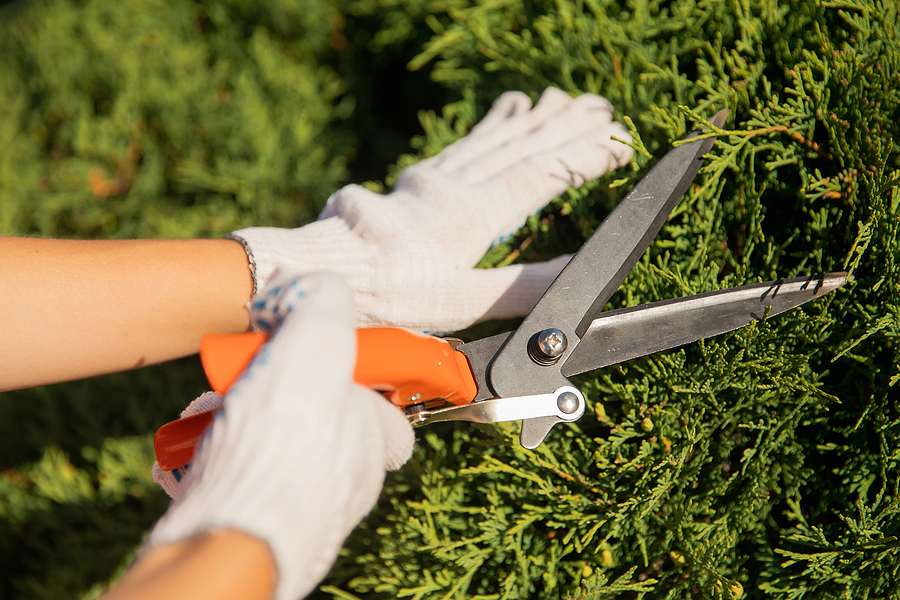
Time to give these a haircut, just check for nesting birds beforehand. Sharpen blades, grease and oil before use, nothing worse than using dirty or blunt tools!
Weeds
With the recent dry weather, weed growth is slowing down, but sadly not stopping! Pull up any large weeds before they flower and set seed!
Whatever the weather enjoy your gardening, take time out, use your senses, listen to the bird song, stop and observe life around you, relax with a glass of your favourite tipple, draw breath and inhale the scents of yours or somebody else’s garden!
Happy Gardening!
Latest posts by Peter Mills (see all)
- Peter’s Gardening Tips for the month of April - March 31, 2025
- Gardening Masterclass: How to prune roses, hydrangeas, shrubs and trees - March 2, 2025
- Peter’s Gardening tips for March - March 1, 2025
- Peter’s Gardening Tips for February - January 29, 2025
- Peter’s Gardening Tips for January 2025 - January 2, 2025








